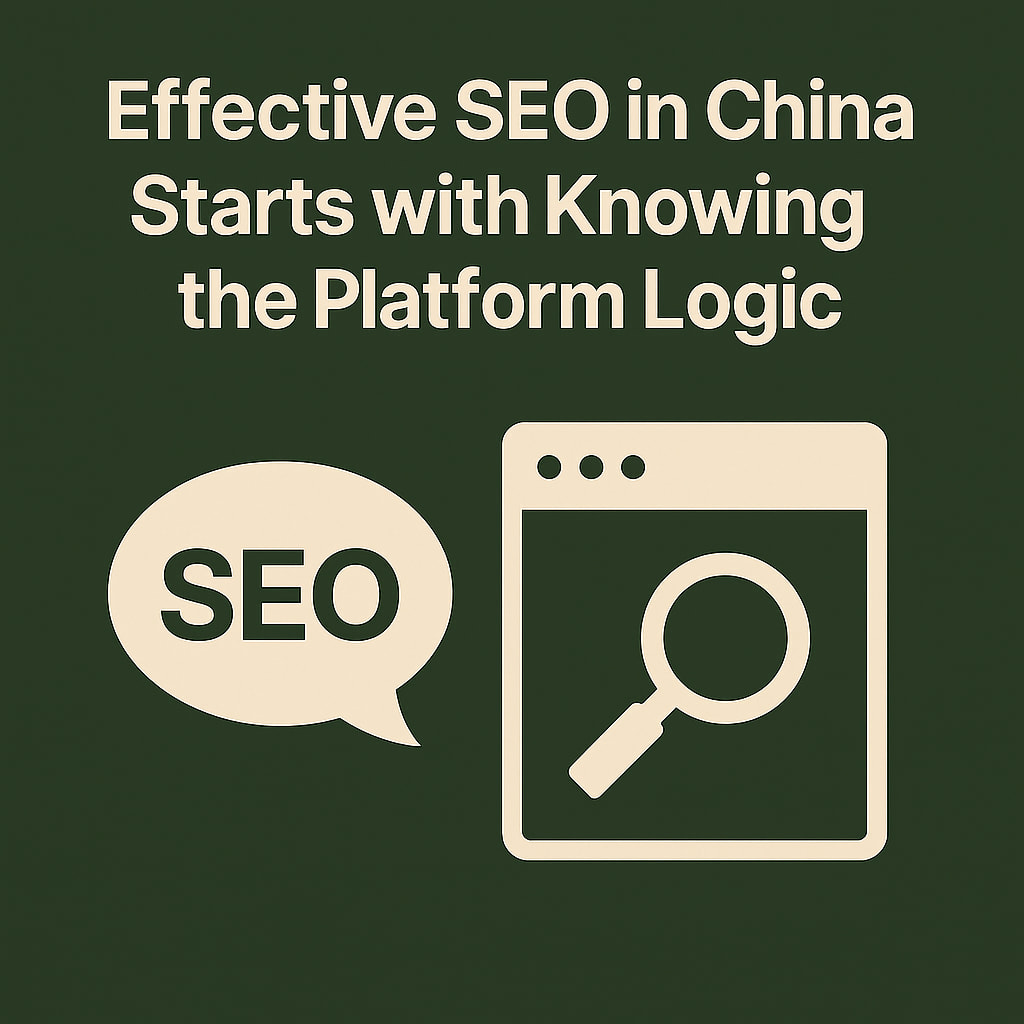Effective SEO in China Starts with Knowing the Platform Logic
By The Olivia
Independent Content Strategist for the China Market
This post is part of the “SEO Strategy” series. Click here to view the series introduction and why it was created.
A foreign skincare brand once hired a content agency to localize its blog for China. The agency translated everything, added meta descriptions, configured an SEO plugin, and waited for traffic. Three months later, the brand ranked for nothing. Not even its own product names.
The problem wasn’t the translation. It was the assumption that SEO works the same everywhere. In China, it doesn’t.
Search platforms like Baidu have their own technical constraints, content preferences, and user behavior. Ticking off technical SEO checklists won’t help much if you don’t understand the platform logic beneath it.
Let’s break this down into three layers: technical, content, and intent.
1. Technical Layer: It’s Not About Being “Perfect”
On paper, the brand had everything set up:
- HTTPS and SSL installed
- Sitemap.xml submitted
- Clean URL structure
- Fast loading speed
But Baidu never properly crawled the content.
Here’s why:
- Baidu doesn’t handle JavaScript-rendered content well. If your content only loads after scripts run, it’s effectively invisible.
- Your site might look great on desktop, but Baidu’s crawlers can’t see complex layouts or interact with lazy-loading modules.
- Baidu values flat architecture. Pages that are buried three levels deep with dynamic slugs don’t get indexed reliably.
What to do instead:
Start by checking if Baidu can even see your content. Use tools like [site:yourdomain.com] in Baidu to verify what’s indexed. Then simplify: use plain HTML structures, avoid JS navigation, and make sure your Chinese content isn’t hidden behind plugins or tabs.
2. Content Layer: Localized ≠ Searchable
Having Chinese-language content doesn’t mean your site is optimized for search. Many translated titles and blog posts don’t match how Chinese users phrase their queries.
Example:
The original blog title:
“What Makes a Good Product Page?”
Translated into Chinese:
“什么是好的产品页面?”
Sounds fine, but no one searches for that.
A better version would be:
“产品页怎么写才能让人留下来?”
Baidu-friendly content means:
- Titles written in searcher language, not brand language
- Headlines that reflect real pain points (“怎么做”、“需要注意”、“哪种更好”)
- Descriptions with summary-style formatting Baidu can parse
Also, remember: Baidu doesn’t rely heavily on backlinks. Internal linking and clear hierarchy matter more than domain authority.
3. Intent Layer: Chinese Search Is Utility-Driven
Western users often search out of curiosity. Chinese users, on the other hand, search with intent. They want answers fast—often in the form of lists, comparisons, or direct advice.
Example:
Instead of writing “The Beginner’s Guide to Skincare Routines,” consider:
“护肤顺序怎么安排最有效?”
or
“新手护肤必看的 3 个重点步骤”
Users aren’t browsing—they’re problem-solving. If your content feels like an ad or is too vague, they’ll leave. Baidu tracks bounce behavior aggressively.
Final Thoughts: Strategy = Platform Fit
SEO in China is less about “optimizing” and more about adapting—to platform constraints, user behavior, and local expectations.
On Google, content doesn’t have to be perfectly structured to get indexed—if the intent is clear, it often gets picked up. On Baidu, the system expects a lot more structure and alignment from the start.
If you’re entering the Chinese market, start by asking:
- Can Baidu crawl and index your content?
- Does your Chinese copy reflect real search queries?
- Are you answering the intent behind those searches?
Forget perfect structure. Focus on platform fit.
You May Also Like:
What Is Baidu SEO? Why It’s Different from Google
Baidu SEO is not a translated version of Google SEO. Learn how China’s digital ecosystem reshapes SEO best practices — and what that means for global brands.
Crisis Communication: Protecting Image Assets
This Ziyu case study explores how to protect “non-negotiable” image assets in a PR crisis—and why preserving these traits matters for long-term brand value.
Is Baidu SEO Still Worth It? Its Value Has Shifted from Traffic to Credibility
Baidu SEO is no longer about traffic—it’s about credibility and visibility, especially for high-stakes industries in China.
Ready to take your content further?
Let’s build a strategy that resonates in the Chinese market.
THE OLIVIA WAY
© 2025 THE OLIVIA WAY. All rights reserved.
